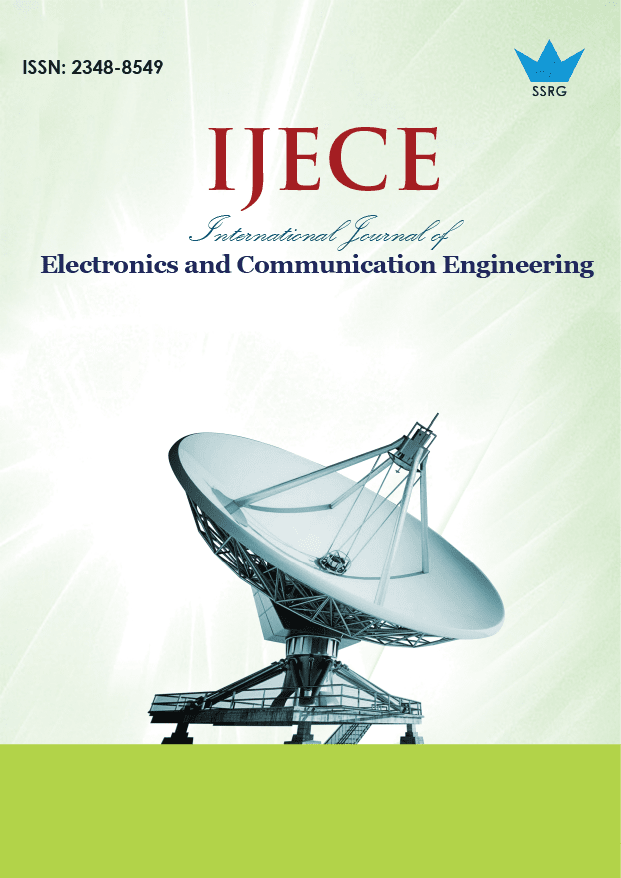Impact of Different Parameters on Handover and Call Drop Performance in UWSNs

| International Journal of Electronics and Communication Engineering |
| © 2025 by SSRG - IJECE Journal |
| Volume 12 Issue 8 |
| Year of Publication : 2025 |
| Authors : Seema Rani, Anju |
How to Cite?
Seema Rani, Anju, "Impact of Different Parameters on Handover and Call Drop Performance in UWSNs," SSRG International Journal of Electronics and Communication Engineering, vol. 12, no. 8, pp. 272-280, 2025. Crossref, https://doi.org/10.14445/23488549/IJECE-V12I8P124
Abstract:
Underwater Wireless Sensor Networks (UWSNs) play an essential role in marine observation and data gathering. However, ensuring reliable communication is challenging due to node mobility and the unpredictable nature of underwater channels. This paper introduces a new method that assimilates the Multi-Verse Optimization (MVO) algorithm to intensify the Hand Over Margin (HOM) essential for establishing continuous connectivity during the mobility of nodes. This paper explains the MVO algorithm and discusses how it can enhance the performance of UWSNs. Another performance metric is Call Drop Ratio (CDR), which measures the proportion of dropped calls during communication. The aim is to enhance the overall network and to curtail the call drops through incorporating the CDR calculations into the MVO framework. This work focuses on specific parameters such as node speed, overlap radius, handover time, and coverage radius, which influence the HOM and CDR to empower the efficiency of network management. Experimental results illustrate that the proposed optimization technique significantly improves the HOM and reduces CDR in UWSNs. This paper concludes with an outline of key observations and suggests potential avenues for future research to further advancements in the application of optimization techniques.
Keywords:
Underwater Wireless Sensor Networks, Handover margin, Call Drop Ratio, Multi-Verse Optimization Algorithm.
References:
[1] Mukhtiar Ahmed, Mazleena Salleh, and M. Ibrahim Channa, “Routing Protocols Based on Node Mobility for Underwater Wireless Sensor Network (UWSN): A Survey,” Journal of Network and Computer Applications, vol. 78, pp. 242-252, 2017.
[CrossRef] [Google Scholar] [Publisher Link]
[2] Esha Rani, and Vikas Juneja, “Secure Communication Techniques for Underwater WSNs,” Energy-Efficient Underwater Wireless Communications and Networking, pp. 171-186, 2021.
[CrossRef] [Google Scholar] [Publisher Link]
[3] Kamran Latif et al., “DIEER: Delay-Intolerant Energy-Efficient Routing with Sink Mobility in Underwater Wireless Sensor Networks,” Sensors, vol. 20, no. 12, pp. 1-21, 2020.
[CrossRef] [Google Scholar] [Publisher Link]
[4] G. Bhaskar, and V. Prathibha, “An Algorithmic approach for Localization using Single Mobile Anchor Node using Information Baton Handover Policy,” International Journal on Recent and Innovation Trends in Computing and Communication, vol. 5, no. 6, pp. 766-768, 2017.
[CrossRef] [Google Scholar] [Publisher Link]
[5] S. Pandey, “Localization Adopting Machine Learning Techniques in Wireless Sensor Networks,” International Journal of Computer Sciences and Engineering, vol. 6, no. 1, pp. 366-374, 2018.
[Google Scholar] [Publisher Link]
[6] Seokhyeon Park, and Ohyun Jo, “Intelligent Handover Prediction Based on Locational Priority With Zero Scanning for the Internet of Underwater Things,” IEEE Access, vol. 8, pp. 186291-186303, 2020.
[CrossRef] [Google Scholar] [Publisher Link]
[7] Yuzhe Zhou, and Bo Ai, “Handover Schemes and Algorithms of High-Speed Mobile Environment: A Survey,” Computer Communications, vol. 47, pp. 1-15, 2014.
[CrossRef] [Google Scholar] [Publisher Link]
[8] Mithun B. Patil, and Rekha Patil, “A Survey on Handover Algorithms in Heterogeneous Wireless Network,” Progress in Advanced Computing and Intelligent Engineering, vol. 1, pp. 277-285, 2020.
[CrossRef] [Google Scholar] [Publisher Link]
[9] Kai Guo et al., “Efficient Handover Schemes for Wireless Sensor Networks under Cellular-Assisted,” Wireless Communication and Network, 2016.
[CrossRef] [Google Scholar] [Publisher Link]
[10] Nathaniel S. Tarkaa, Joseph M. Mom, and Cosmas I. Ani, “Drop Call Probability Factors in Cellular Networks,” International Journal of Scientific & Engineering Research, vol. 2, no. 10, pp. 1-5, 2011.
[Google Scholar]
[11] Chidera L. Anioke, Obinna C. Nnamani, and Cosmas I. Ani, “Call Drop Minimization Techniques for Handover Calls in Mobile Cellular Networks,” International Journal of Scientific & Engineering Research, vol. 6, no. 3, pp. 1-4, 2015.
[Google Scholar]
[12] Lester T.W. Ho, and Holger Claussen, “Effects of User-Deployed, Co-Channel Femtocells on the Call Drop Probability in a Residential Scenario,” 2007 IEEE 18th International Symposium on Personal, Indoor and Mobile Radio Communications, Athens, Greece, pp. 1-5, 2007.
[CrossRef] [Google Scholar] [Publisher Link]
[13] K.M. Delphin Raj et al., “Handover Mechanism Based on Underwater Hybrid Software-Defined Modem in Advanced Diver Networks,” Computers, Materials & Continua, vol. 70, no. 3, pp. 5721-5743, 2022.
[CrossRef] [Google Scholar] [Publisher Link]
[14] Mark Irwin Goh et al., “Handover Decision-Making Algorithm for 5G Heterogeneous Networks,” Electronics, vol. 12, no. 11, pp. 1-20, 2023.
[CrossRef] [Google Scholar] [Publisher Link]
[15] S. Kyriazakos, D. Drakoulis, and G. Karetsos, “Optimization of the Handover Algorithm Based on the Position of the Mobile Terminals,” IEEE Benelux Chapter on Vehicular Technology and Communications. Symposium on Communications and Vehicular Technology. SCVT-2000. Proceedings (Cat. No.00EX465), Leuven, Belgium, pp. 155-159, 2000.
[CrossRef] [Google Scholar] [Publisher Link]
[16] Karishan Jatin, “Study and Analysis of Call Dropping and Handover Problem in Cellular System,” International Journal of Advanced Research in Computer Engineering & Technology, vol. 5, no. 6, pp. 1776-1777, 2016.
[Google Scholar]
[17] Moses Effiong Ekpenyong, Victoria Idia Udoh, and Udoma James Bassey, “Mitigating Handoff Call Dropping in Wireless Cellular Networks: A Call Admission Control Technique,” Journal of The Institution of Engineers (India): Series B, vol. 97, pp. 167-174, 2016.
[CrossRef] [Google Scholar] [Publisher Link]
[18] Seyedali Mirjalili, Seyed Mohammad Mirjalili, and Abdolreza Hatamlou, “Multi-Verse Optimizer: A Nature-Inspired Algorithm for Global Optimization,” Neural Computing and Applications, vol. 27, pp. 495-513, 2016.
[CrossRef] [Google Scholar] [Publisher Link]
[19] Gebrehiwet Gebrekrstos Lema, “Telecommunication Customer Satisfaction Using Self‐Organized Network‐Based Heuristic Algorithm,” International Journal of Communication Systems, vol. 34, no. 6, 2021.
[CrossRef] [Google Scholar] [Publisher Link]

 10.14445/23488549/IJECE-V12I8P124
10.14445/23488549/IJECE-V12I8P124